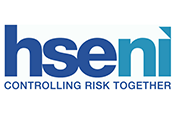Ensure lone workers' safety
Lone working risk assessment checklist
Guide
Your lone working risk assessment should consider a wide range of factors that may endanger a lone worker's health and safety. This may include risks relating to equipment, stress and violence.
This lone working risk assessment checklist highlights examples of risks you should take into account.
Make sure you:
- Assess whether the risks of the job can be controlled by someone working on their own.
- Check whether there is any specific legal requirement to have more than one worker for certain activities - eg diving operations may require both a supervisor and a rescue diver.
- Find out whether proper training has been provided.
- Consider whether the workplace presents special risks for someone on their own. For instance, someone working with a ladder might need another person to stabilise it.
- Take into account whether the work involves handling dangerous equipment or substances that require supervision.
- Consider whether the work is particularly stressful. See how to deal with stress.
- Consider whether there is a risk of violence.
- Assess whether the lone worker is medically fit to work alone.
- Consider whether certain groups of people face particular risks - such as trainees, young, pregnant or disabled workers.
- Make arrangements for lone workers whose first language is not English, to ensure clear communication, especially in an emergency.
- Make contingency plans in case the worker falls ill or has an accident, or there is an emergency such as a fire or hazardous spillage.
- Arrange proper supervision and monitoring for lone workers. See monitor lone workers' health and safety.
It is recommended that employers review risk assessments at least annually, or when there has been a significant change in working practice.
- HSENI Helpline0800 032 0121
Actions
Also on this site
Developed with:
